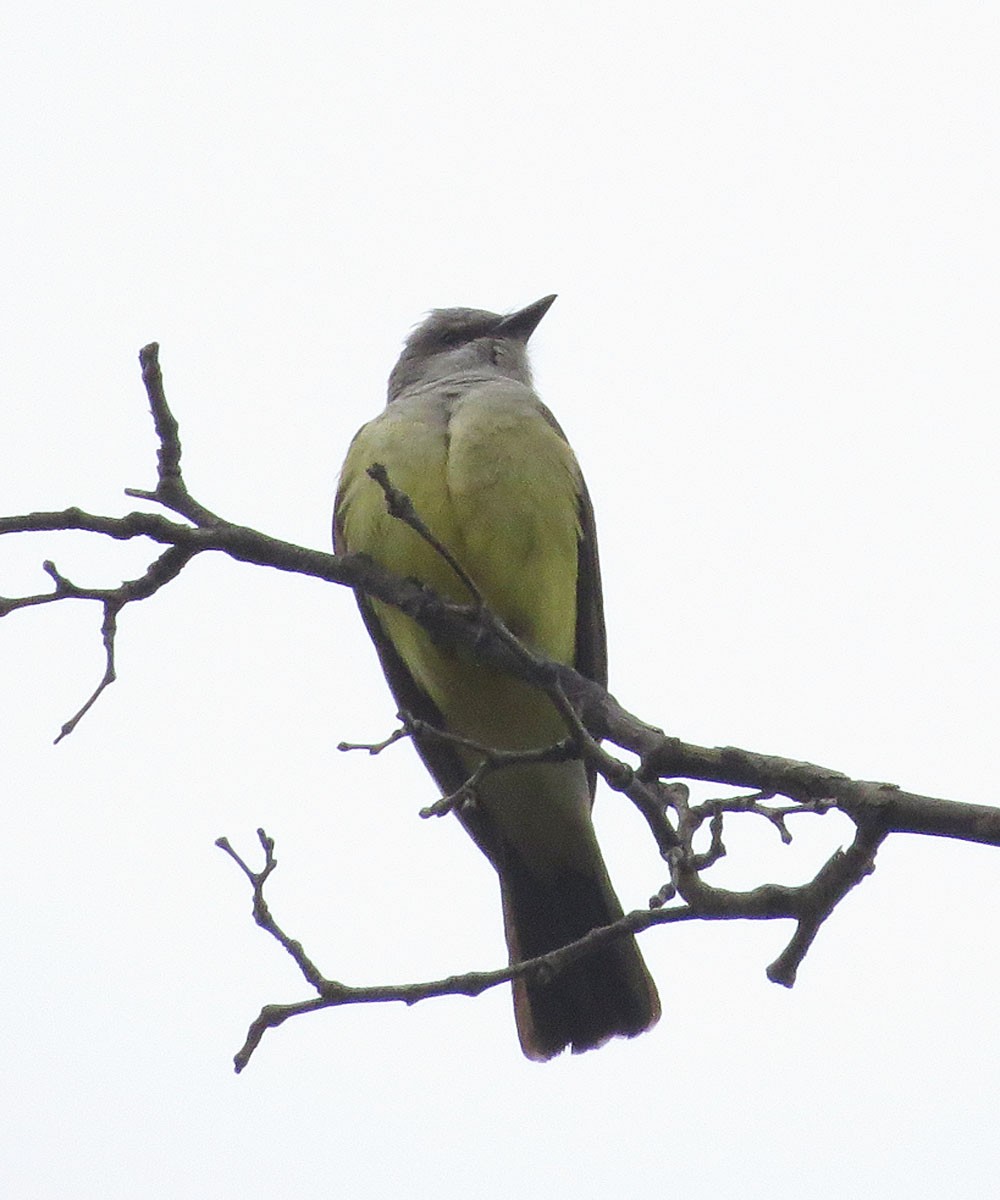Cassin's Kingbird
A species of Kingbirds Scientific name : Tyrannus vociferans Genus : Kingbirds
Cassin's Kingbird, A species of Kingbirds
Botanical name: Tyrannus vociferans
Genus: Kingbirds
Content
Description General Info
 Photo By Don Faulkner , used under CC-BY-SA-2.0 /Cropped and compressed from original
Photo By Don Faulkner , used under CC-BY-SA-2.0 /Cropped and compressed from original Description
Adults have a gray head with slightly darker cheeks; a dark unforked tail with a buffy fringe and gray-olive underparts. They have a pale throat and deep yellow lower breast. Juveniles are duller and have pale edges on their wings. Measurements: Length: 8.3-9.1 in (21-23 cm) Weight: 1.6 oz (45 g) Wingspan: 41 cm 
Size
20-23 cm (8-9 in)
Colors
Brown
Black
Yellow
Gray
White
Life Expectancy
7-10 years
Nest Placement
Tree
Feeding Habits
Cassin's Kingbird primarily consume insects caught during flight, such as beetles, bees, wasps, ants, and others, and occasionally eat berries like grape and elderberry. They forage from perches, performing aerial sallies to snap prey in midair, and also glean insects from the ground or vegetation.
Habitat
Cassin's Kingbird thrives in varied environments, from lower montane woodlands to arid scrublands. These birds prefer habitats offering tall trees for nesting and open areas for foraging. They are frequently observed in riparian woodlands, piñon pine-juniper stands, oak savannas, and pine woodlands, as well as amidst large trees in irrigated agricultural landscapes. Their range covers a broad altitude spectrum, found from sea level to highlands over 9,800 feet. Human-altered terrains such as rural regions with utility structures are also utilized by cassin's Kingbird as foraging perches.
Nest Behavior
Cassin's Kingbird females build the nest and incubate the eggs. Nest construction and egg-laying occur during spring. Both parents are involved in feeding and protecting the young, exhibiting high parental care.
Nest Characteristics
Cassin's Kingbird's nest is placed in the upper third of a tall tree, preferably on a horizontal branch. It's a bulky structure made of twigs, bark, and various plant materials, measuring about 8 inches wide and 3 inches tall. The interior cup is roughly 3.5 inches across and 2 inches deep, often lined with grasses and sometimes decorated with feathers or flowers.
Dite type
Insectivorous
General Info
Feeding Habits
Bird food type
Sounds
Call
Recording location: Mexico
Call
Recording location: Mexico
Behavior
Cassin's Kingbird are territorially vocal during breeding season, initiating dawn songs and performing distinctive territorial flights. They defend feeding and nesting areas, with males engaging in threat displays and patrols, or staying near the nest to deter rivals. Both sexes exhibit excitable greeting behaviors. Nest-building and egg incubation is the female's role, while males forage and guard against predators, with both parents feeding nestlings.
Distribution Area
In the summer, these birds can be found in California and from Montana to Utah, along the eastern Rocky Mountains. Their habitat includes rangelands and savannas. These birds migrate to their winter quarters between Southern California and northern Central America. They are permanent residents in south-central Mexico, and their main wintering ranges are west of the Gulf of California on Baja California Sur, and east of the sea on the mainland of western Mexico. 
Species Status
Not globally threatened.
Scientific Classification
Phylum
Chordates Class
Birds Order
Perching birds Family
Tyrant flycatchers Genus
Kingbirds Species
Cassin's Kingbird